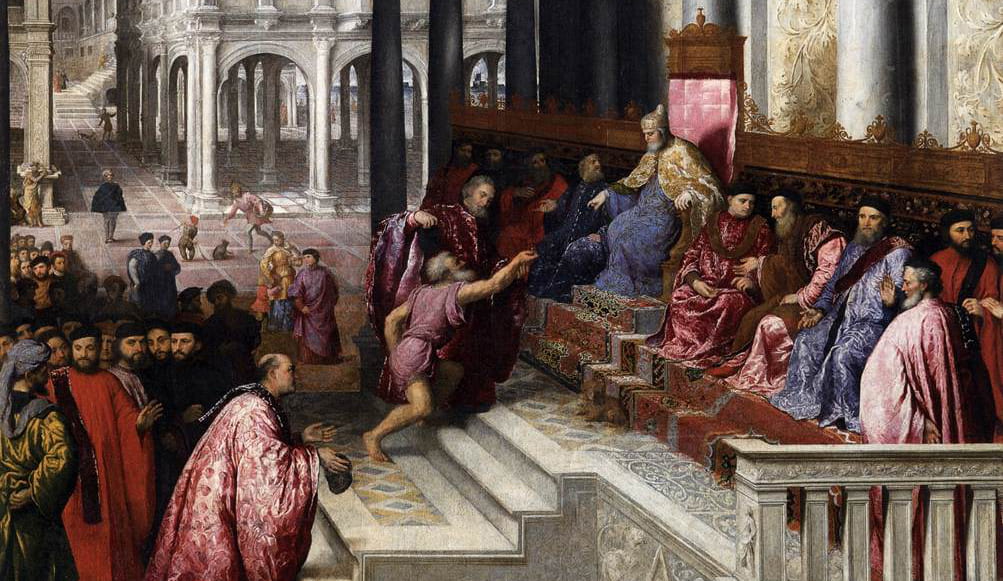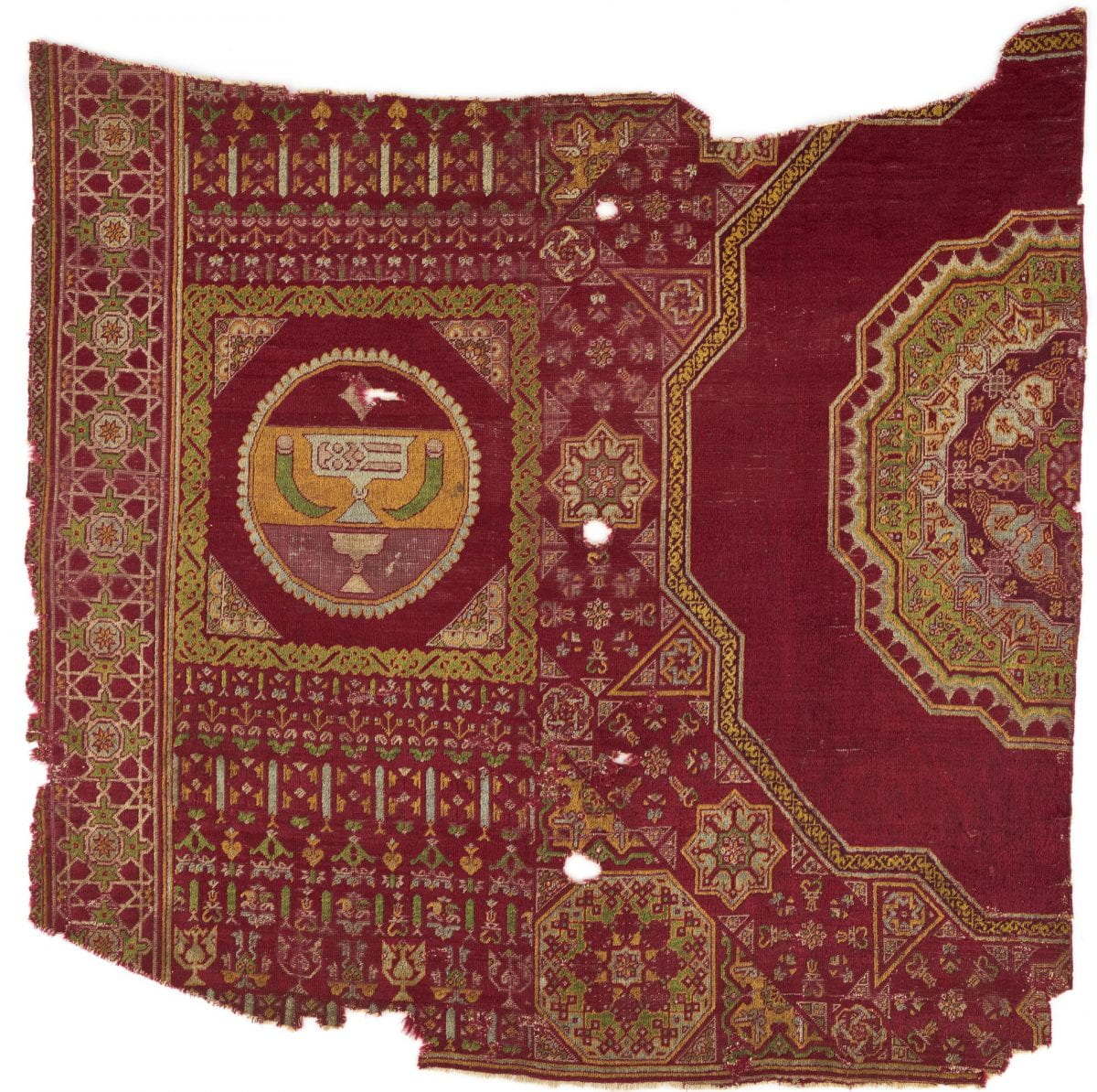In 1250 Turkic slave soldiers, or “mamluks,” seized power from the ruling sultanate in Egypt and Syria. For the next 300 years, the Mamluk sultanate ruled over a wide stretch of the Near East. Under their patronage, Islamic arts flourished, and Mamluk textiles and rugs powered a lucrative international trade with Europe, particularly Italy.
Surviving Mamluk rugs from the 15th and 16th centuries are unique for their complex ornamentation, jewel-like colors and structure. For centuries, parts of their history remained obscure — including where they were made and the origins of their geometric patterning.
This carpet fragment helped solve the puzzle. In the early 20th century, 17 other fragments from the same huge carpet were found in the collection of the late antique dealer Stefano Bardini. It appears that the carpet was an early type of court production created in Cairo under Mamluk Sultan Qaitbey (1468-1496) for the palaces of the very rich. The style was eventually incorporated into commercial production.
Close study reveals that the right selvedge of the fragment is finished, which is also true for some of the Bardini fragments. This suggests the carpet was made in two vertical halves with mirror-image designs — a solution for weaving very large carpets since existing looms in Cairo were not wide enough.
The blazon pattern on the left side was a symbol of Qaitbey’s courtiers. The complex patterning around it may have been devised by skilled Turkic artisans who arrived in Cairo between 1460 and 1470 under Qaitbey and produced a repertoire of new designs.

Further Reading
Rosamond E. Mack, “Pope Innocent VIII’s Mamluk Carpets from Cairo in Context: Their Manufacture and Acquisition,” The Textile Museum Journal, vol. 44 (2017): 70-91.
